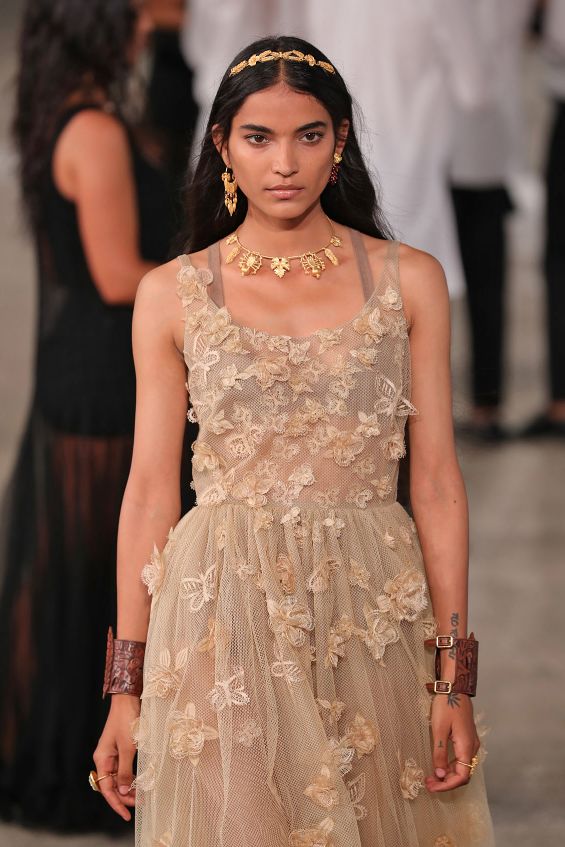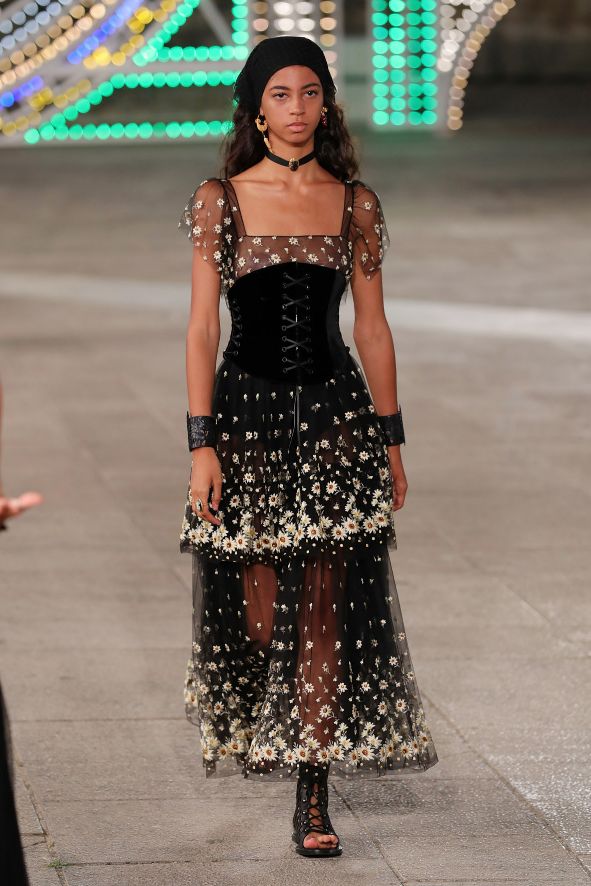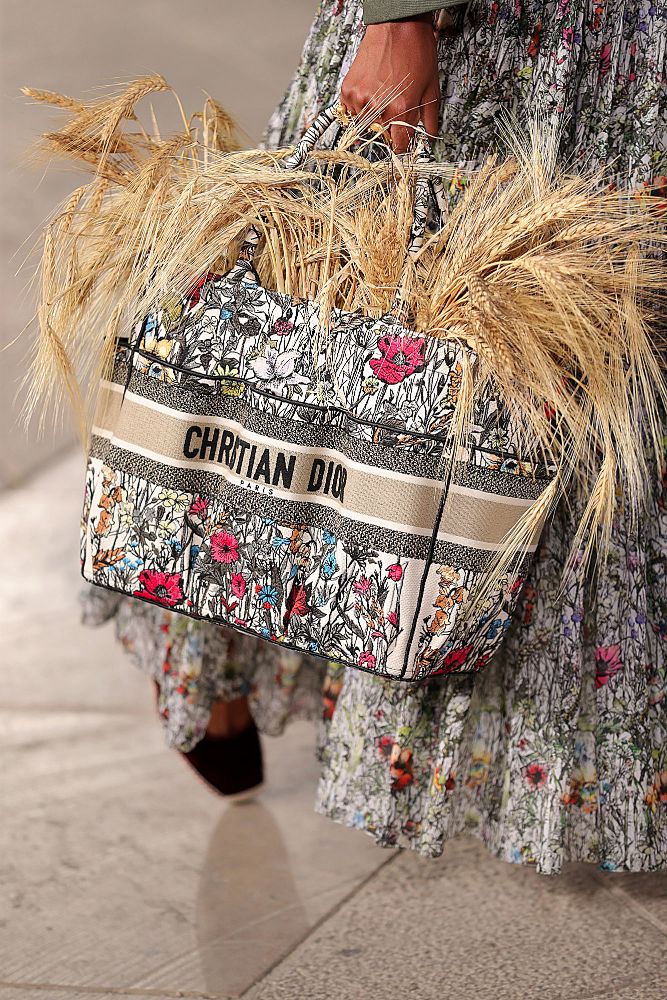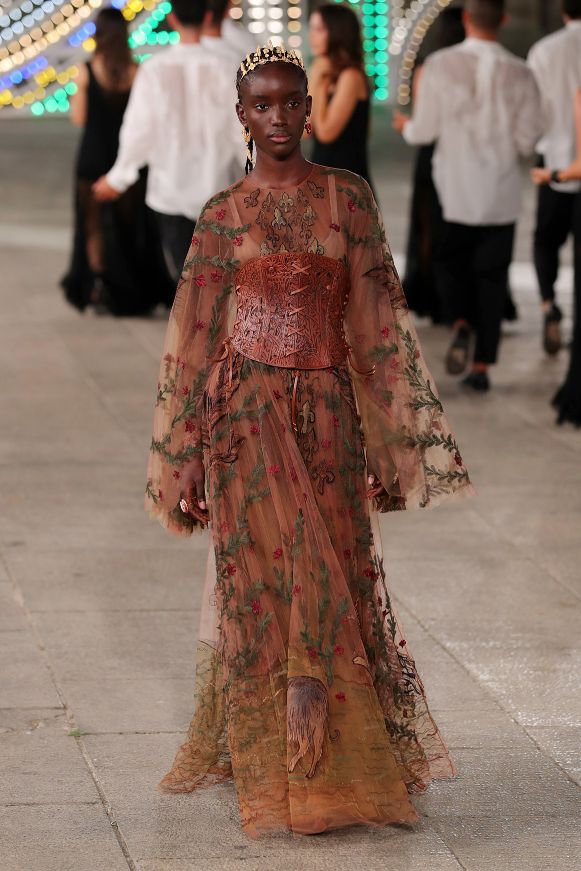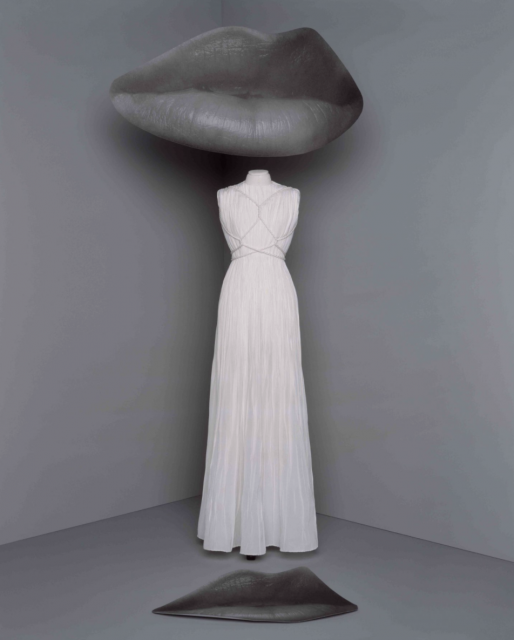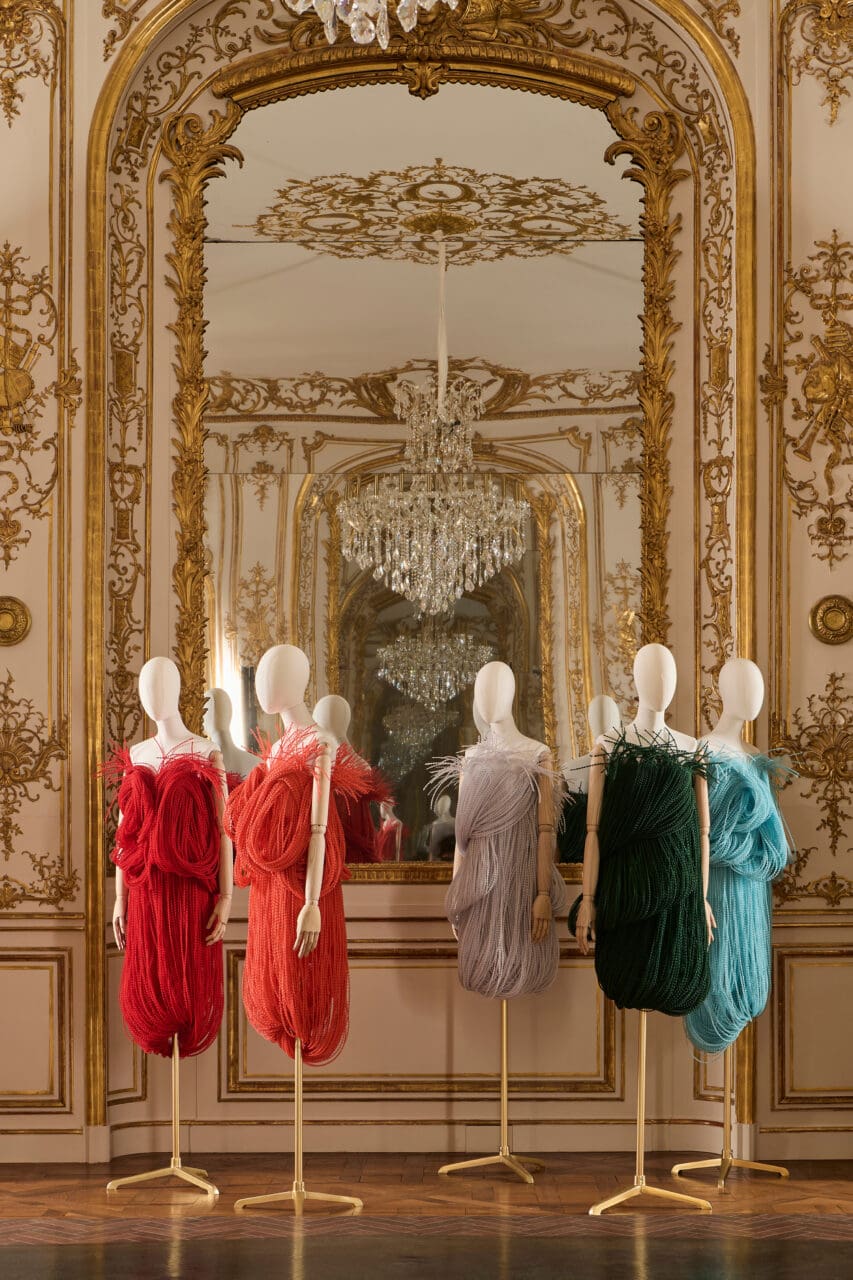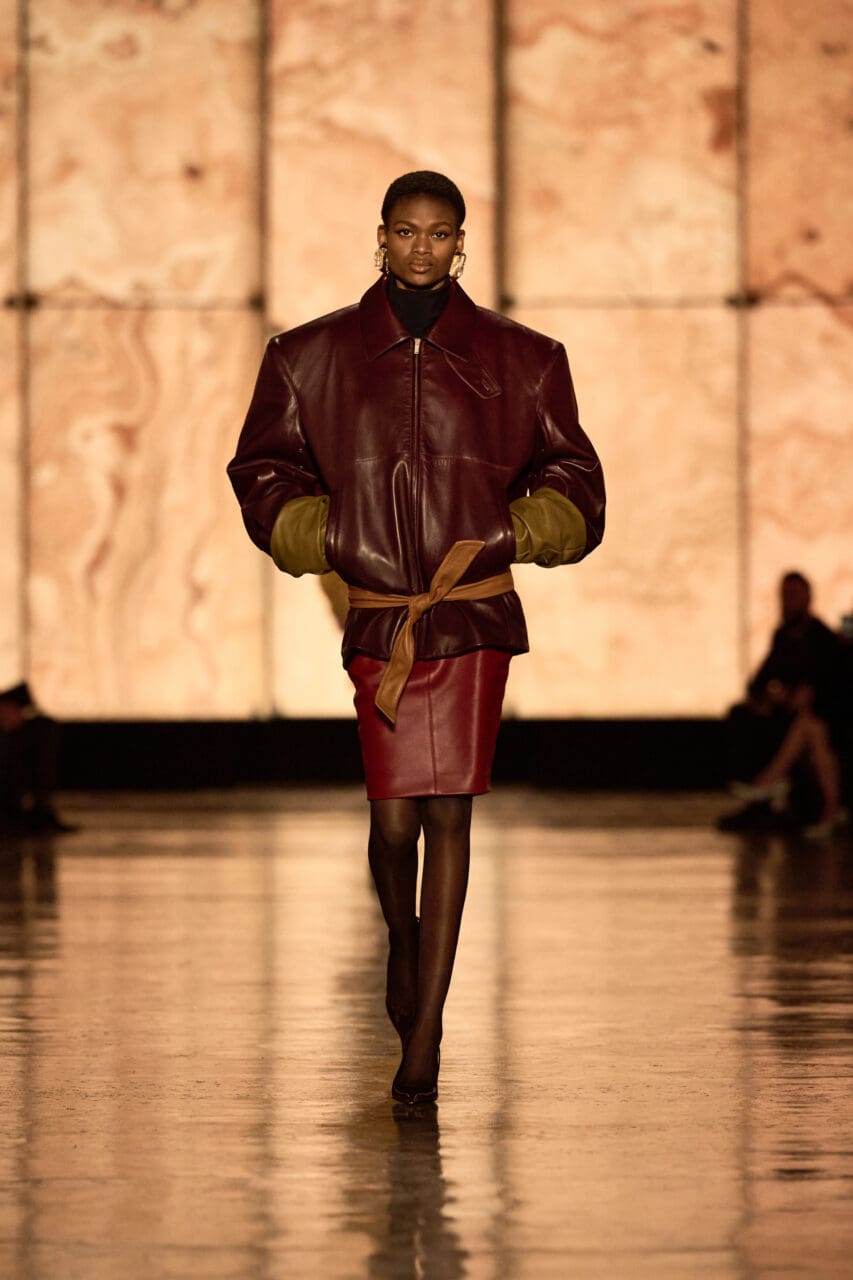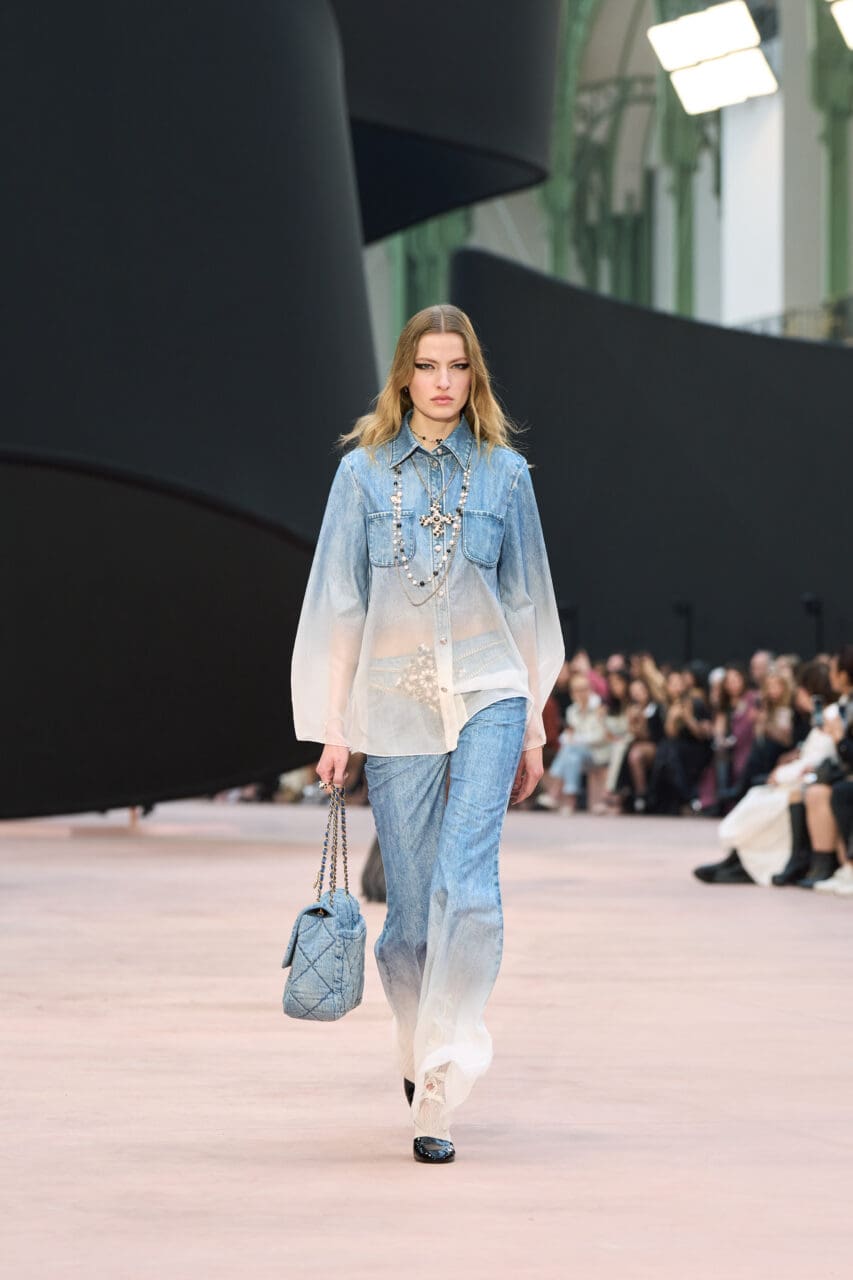While most of the world is going nowhere, Maria Grazia Chiuri is going back to her roots. The designer took the Dior cruise 2021 show to Lecce, the stunning Baroque city in Puglia, in southern Italy, for a show that placed the emphasis squarely on craftsmanship – as well as family. “This show is about craftsmanship, the references that I vividly remember from the past: the embroidery, the textiles that I saw my grandmother and uncle make when I was a child,” the designer said.
Taking place in the latter stages of a pandemic, Dior’s decision to go “on with the show” was about supporting one of the poorest regions in Italy, too. Local artisans had been employed to work on the clothes way back in November, and, in the event, local dancers and musicians in a masked-up Orchestra Roma Sinfonietta performed traditional pieces (and a newly commissioned score by Paolo Buonvino) from Salento. As the choreographer Sharon Eyal said in a video released on Dior’s Instagram channel: “Dior is giving us the possibility of portraying this new woman who dances the pizzica. She is a woman who is at ease in the world and she knows how to put everyone else at ease around her.”
Alas, there wasn’t much of a live audience to witness such grace in person, though a small selection of guests made the trip, lining the rooftops around the square to catch the show, while thousands more watched via livestream. Here, five things to know about Dior’s cruise 2021 show.
1. The “Florence of the South” was lit
The main square in Lecce was closed off from the public, and traditional luminarie, coloured lights that decorate local folk festivals in Puglia, lit up the square, commissioned by the House and containing a series of artful slogans. The lights weighed 60 tons, and featured 30,000 coloured LED lights, coalescing to create a magnificent set that took months to make and 12 days to construct. “Christian Dior has this ability to dress all women, and we have the same passion for decorating our squares for the holidays,” a Puglian artisan from Fratelli Parisi, the local luminarie makers, recounted in behind-the-scenes video footage that Dior released in conjunction with the show. “I have always said that we are like tailors stitching together the town festivities.”
2. Puglian craftsmanship took centre stage
Keen to spotlight traditional crafts that originated in the area, near where she has a holiday home, and where she grew up, Chiuri had visited the region in late 2019, meeting and commissioning artisans such as a group of women who are highly skilled in tombola embroidery. This season, the Miss Dior dress – a floral embroidered gown first created in 1949 – was completed with handmade roses, embroidered by hand, by Italian women. As the pandemic took hold, the focus on craft became more meaningful. As CEO Pietro Beccari said: “We would like to send a message of support, hope and rebirth to the world, to the big suppliers and the small ones. Many still don’t know how to survive, so this move is so important for the artisans that we need to preserve. We want to give them a reason to restart.”
3. Kerchiefs were the prevailing accessory
In a style Maria Grazia has made her signature, models wore kerchiefs in locally-made lace, in cream and black hues, with braided or tousled hair and rustic jewellery depicting butterflies, flowers and leaves. The effect was distinctly haute-homespun: seriously glamorous eveningwear was paired with the carefree everyday accessory and simple flat sandals.
4. Wholesome wheat trimmed dresses and handbags
How to update your Dior Book tote if you’re hard-pressed to upgrade to a fabulously neon or floral embroidered new-season iteration? Just stuff it full of wheat. And, if you fancy amping up your rustic credentials, why not trim your corset belt with the stuff, too?
5. New face Maty Fall Diba closed the show
Fresh-faced Senegal-born, Italy-raised model Maty Fall Diba closed the show in a magnificent floor-length gown, complete with a crown – but only after having hosted an Instagram takeover for the brand, during which she conducted a comprehensive tourist tour of Lecce and stopped off for a little snack of burrata and salami in local watering hole, La Bottega del Corso.
Previously published on British Vogue
Editor
Ellie PithersCredit
Lead image: Stefania D'Alessandro/WireImage

